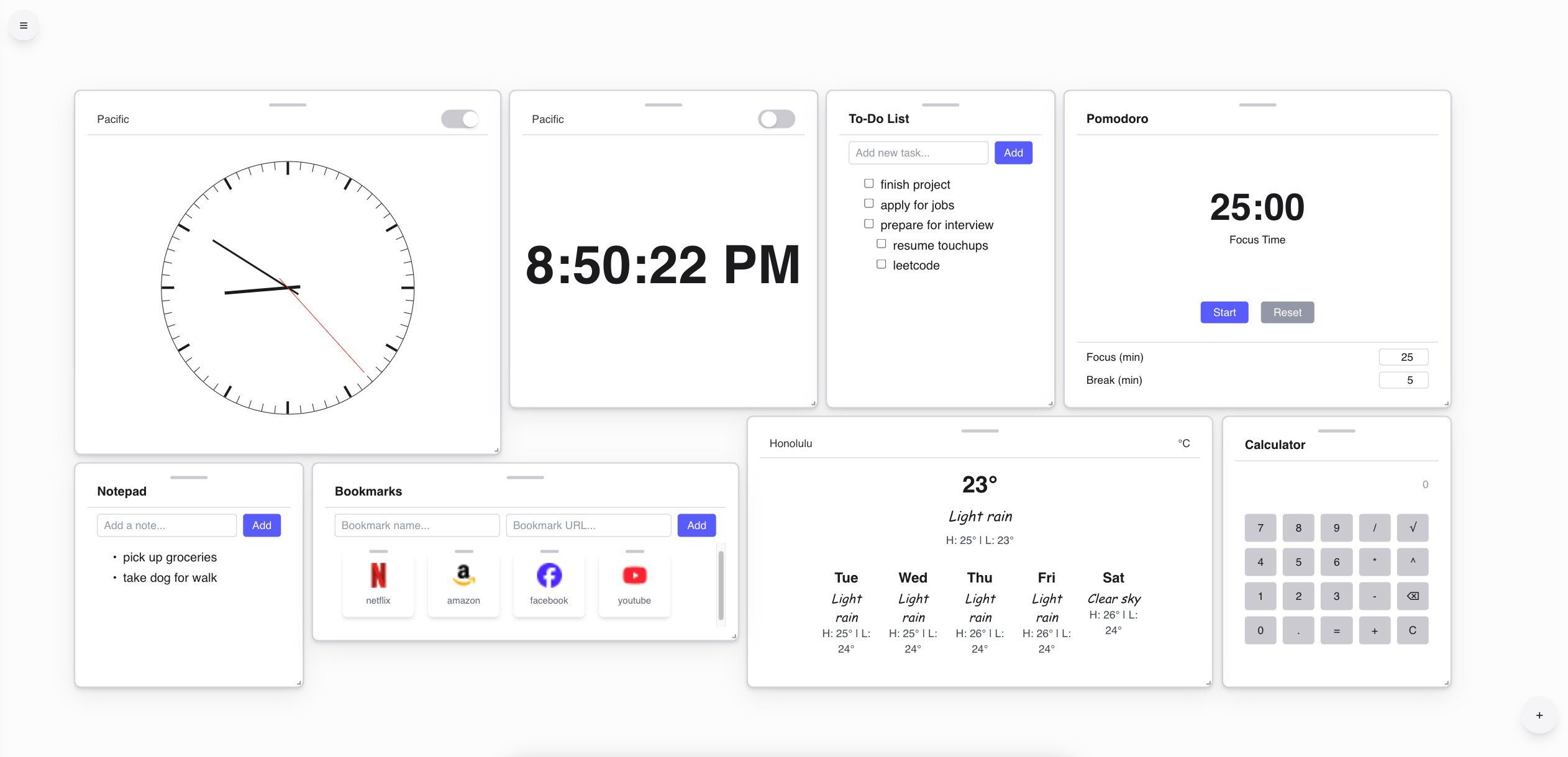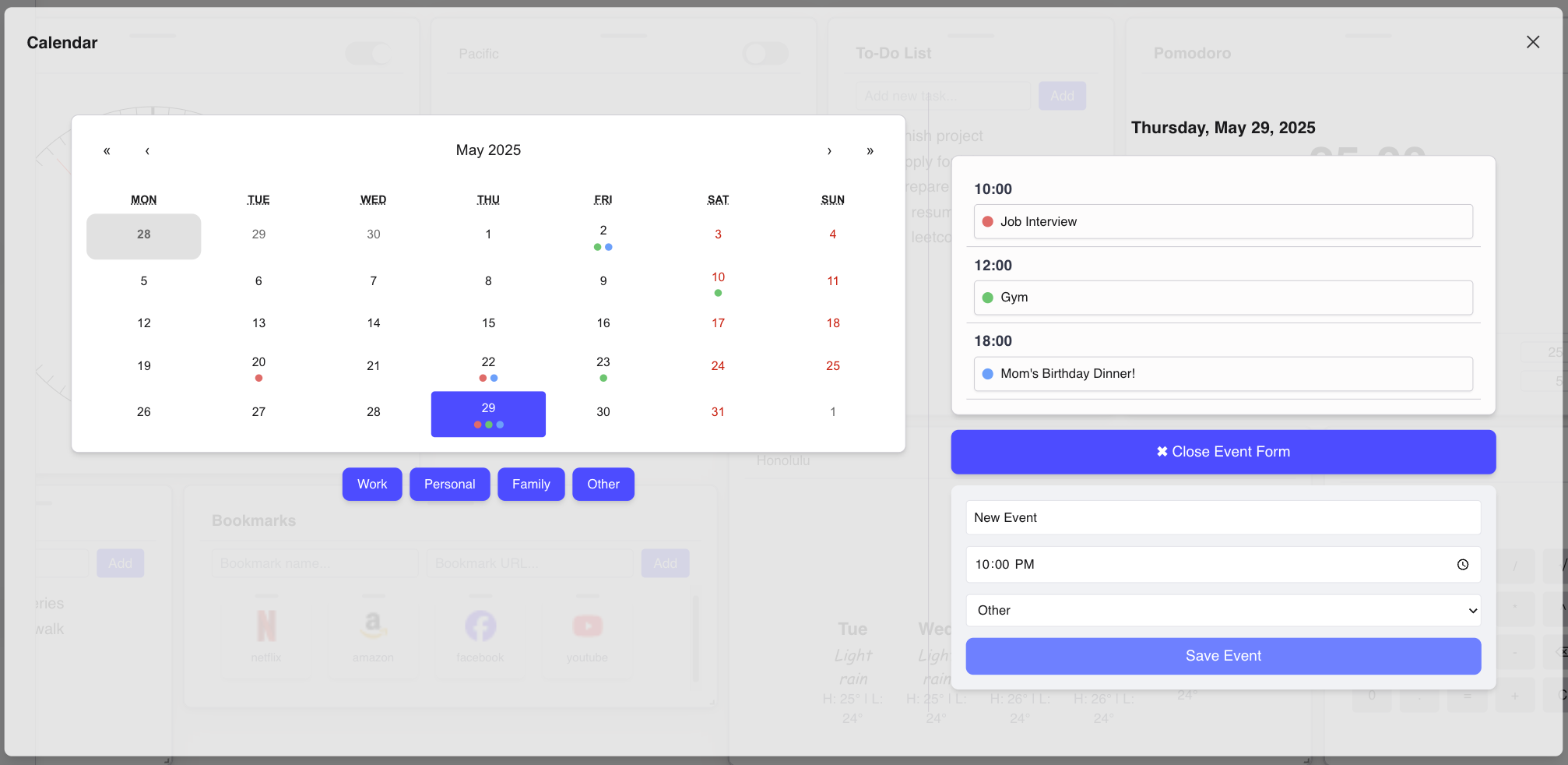This is a full-stack web application that provides modular productivity tools with a Django backend and React frontend. The application focuses on a clean, scalable architecture and efficient data management.
Backend Architecture
- Framework: Django REST Framework (DRF) to build RESTful APIs.
- Authentication:
- Token-based authentication using Django's
rest_framework.authtokento secure endpoints. - Login and registration endpoints with token issuance and validation.
- Token-based authentication using Django's
- Database Design:
- PostgreSQL used for storing user data, widgets, and preferences.
- Foreign key relationships to link users to their widget layouts and preferences.
- Data Handling:
- Designed APIs to support CRUD operations for user preferences, enforcing proper data access controls.
Frontend Overview
- Framework: React with functional components and hooks.
- State Management:
- Local component state and API calls to manage widget data.
- API Integration:
- Used
fetch/axiosfor secure communication with the Django backend and stored tokens inlocalStoragefor persistent sessions.
- Used
- UI Design:
- Modular widget components designed for easy customization and extension.
Technology Stack
- Backend: Django, Django REST Framework
- Frontend: React, HTML/CSS, JavaScript
- Database: PostgreSQL (SQLite for local development)
- Authentication: Token-based Authentication (DRF)
Widgets
The application provides the following productivity tools:
- Clock: Displays the current time.
- To-Do List: A simple task manager for daily activities.
- Calculator: A basic calculator for quick calculations.
- Notes: A note-taking widget for quick jotting down of ideas.
- Pomodoro Timer: A time management tool based on the Pomodoro Technique.
- Bookmarks: A place to store and access links.
- Weather Forecast: Displays weather information using an external API for real-time weather updates based on user location.
Features
User Authentication
- Magic Link Authentication:
- Users receive a one-time login link via email for password-free login.
- Secure token is used for authentication after the link is clicked.
- Token Management:
- Tokens are used to manage user sessions and secure API endpoints.
Database Organization
- Widget Table:
- Stores metadata for each widget.
- User Preferences Table:
- Maps user IDs to widget settings (e.g., weather location, timers).
- Data Validation:
- Ensures all user inputs are validated server-side before saving to the database.
Widget Preferences
- Customization:
- Users can modify widget settings, with changes persisted and reloaded on login.
- Efficient Updates:
- Implemented PATCH requests to update widget settings without replacing entire objects.
Recommendations
- OAuth Integration:
- Add sign-in options for Google or GitHub.
- Magic Link Security:
- Improve security by shortening token expiration times and enforcing one-time-use policies.
- Caching Layer:
- Add caching (e.g., Redis) to improve performance for frequently accessed data.
- User Personalization:
- Expand user profiles to support customizable layouts, themes, and notifications.

